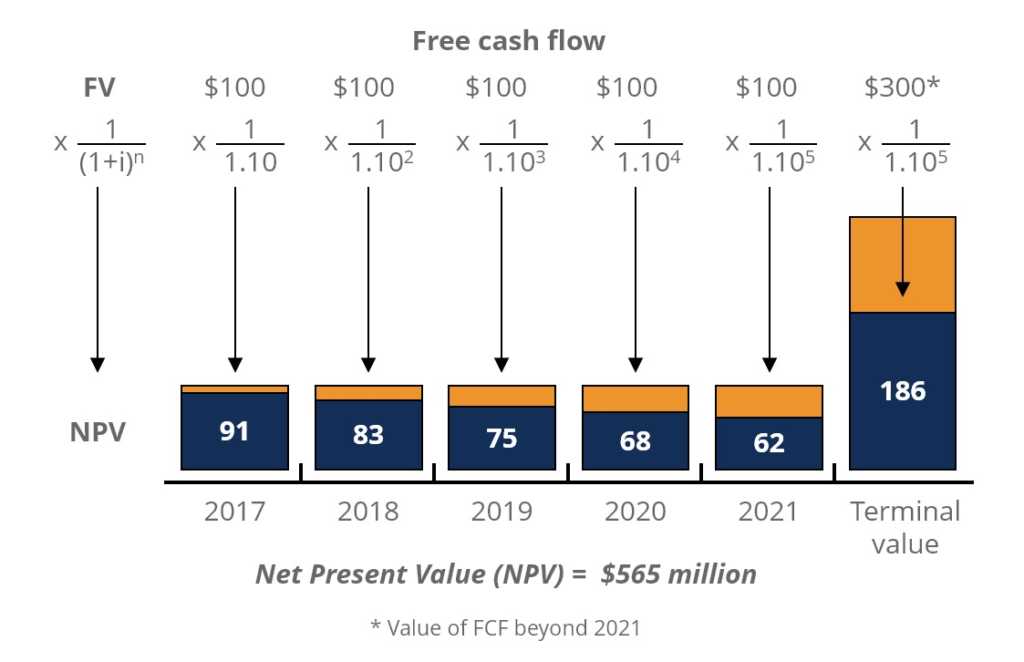By Sunday night, when Mitch Mc, Connell required a vote on a brand-new bill, the bailout figure had expanded to more than 5 hundred billion dollars, with this big sum being assigned to two different propositions. Under the very first one, the Treasury Department, under Secretary Steven Mnuchin, would apparently be offered a budget plan of seventy-five billion dollars to supply loans to specific business and markets. The second program would operate through the Fed. The Treasury Department would provide the reserve bank with 4 hundred and twenty-five billion dollars in capital, and the Fed would use this cash as the basis of a mammoth lending program for firms of all sizes and shapes.
Details of how these schemes would work are vague. Democrats said the brand-new expense would offer Mnuchin and the Fed overall discretion about how the money would be dispersed, with little transparency or oversight. They criticized the proposition as a "slush fund," which Mnuchin and Donald Trump might utilize to bail out preferred business. News outlets reported that the federal government would not even need to recognize the help recipients for as much as six months. On Monday, Mnuchin pushed back, stating individuals had actually misconstrued how the Treasury-Fed collaboration would work. He may have a point, but even in parts of the Fed there may not be much enthusiasm for his proposal.
throughout 2008 and 2009, the Fed dealt with a lot of criticism. Evaluating by their actions so far in this crisis, the Fed chairman, Jerome Powell, and his coworkers would prefer to concentrate on stabilizing the credit markets by purchasing and financing baskets of monetary possessions, instead of providing to private companies. Unless we want to let distressed corporations collapse, which might highlight the coming downturn, we need a way to support them in an affordable and transparent manner that minimizes the scope for political cronyism. Fortunately, history provides a template for how to carry out business bailouts in times of acute stress.
At the beginning of 1932, Herbert Hoover's Administration set up the Reconstruction Financing Corporation, which is typically described by the initials R.F.C., to supply support to stricken banks and railroads. A year later, the Administration of the freshly elected Franklin Delano Roosevelt greatly broadened the R.F.C.'s scope. For the rest of the nineteen-thirties and throughout the 2nd World War, the institution offered crucial financing for businesses, agricultural interests, public-works schemes, and disaster relief. "I think it was a terrific successone that is typically misinterpreted or overlooked," James S. Olson, a historian at Sam Houston State University, in Huntsville, Texas, informed me.

It slowed down the mindless liquidation of assets that was going on and which we see a few of today."There were 4 keys to the R.F.C.'s success: independence, leverage, management, and equity. Developed as a quasi-independent federal agency, it was overseen by a board of directors that consisted of the Treasury Secretary, the chairman of the Fed, the Farm Loan Commissioner, and 4 other individuals appointed by the President. "Under Hoover, the majority were Republicans, and under Roosevelt the majority were Democrats," Olson, who is the author of a detailed history of the Reconstruction Financing Corporation, said. "But, even then, you still had people of opposite political associations who were required to connect and coperate every day."The truth that the R.F.C.
Congress originally enhanced it with a capital base of five hundred million dollars that it was empowered to leverage, or multiply, by releasing bonds and other securities of its own. If we established a Coronavirus Financing Corporation, it could do the same thing without straight involving the Fed, although the reserve bank may well end up purchasing some of its bonds. At first, the R.F.C. didn't openly announce which companies it was providing to, which resulted in charges of cronyism. In the summer season of 1932, more openness was presented, and when F.D.R. got in the White House he found a competent and public-minded person to run the company: Jesse H. While the initial objective of the RFC was to assist banks, railways were helped due to the fact that lots of banks owned railroad bonds, which had actually decreased in value, since the railways themselves had suffered from a decline in their business. If railroads recuperated, their bonds would increase in value. This increase, or appreciation, of bond prices would improve the monetary condition of banks holding these bonds. Through legislation authorized on July 21, 1932, the RFC was licensed to make loans for self-liquidating public works job, and to states to offer relief and work relief to clingy and jobless people. This legislation also needed that the RFC report to Congress, on a month-to-month basis, the identity of all brand-new borrowers of RFC funds.
During the very first months following the establishment of the RFC, bank failures and currency holdings beyond banks both decreased. Nevertheless, a number of loans aroused political and public debate, which was the factor the July 21, 1932 legislation included the arrangement that the identity of banks getting RFC loans from this date forward be reported to Congress. The Speaker of the House of Representatives, John Nance Garner, ordered that the identity of the loaning banks be made public. The publication of the identity of banks getting RFC loans, which began in August 1932, decreased the effectiveness of RFC lending. Bankers became hesitant to borrow from the RFC, fearing that public revelation of a RFC loan would trigger depositors to fear the bank was in danger of stopping working, and potentially start a panic (Which results are more likely for someone without personal finance skills? Check all that apply.).
What Does How To Finance A Private Car Sale Do?
In mid-February 1933, banking difficulties established in Detroit, Michigan. The RFC wanted to make a loan to the distressed bank, the Union Guardian Trust, to prevent a crisis. The bank was among Henry Ford's banks, and Ford had deposits of $7 million in this particular bank. Michigan Senator James Couzens required that Henry Ford subordinate his deposits in the distressed bank as a condition of the loan. If Ford concurred, he would risk losing all of his deposits prior to any other depositor lost a penny. Ford and Couzens had as soon as been partners in the automotive organization, however had become bitter competitors.
When the settlements failed, the governor of Michigan declared a statewide bank vacation. In spite of the RFC's desire to help the Union Guardian Trust, the crisis might not be avoided. The crisis in Michigan resulted in a spread of panic, initially to adjacent states, however ultimately throughout the nation. Every day of Roosevelt's inauguration, March 4, all states had actually declared bank vacations or had limited the withdrawal of bank deposits for money. As one of his very first function as president, on March 5 President Roosevelt announced to the country that he was stating a nationwide bank holiday. Nearly all monetary institutions in the nation were closed for business throughout the following week.
The efficiency of RFC lending to March 1933 was limited in numerous respects. The RFC required banks to promise possessions as security for RFC loans. A criticism of the RFC was that it frequently took a bank's best loan assets as collateral. Therefore, the liquidity supplied came at a steep cost to banks. Likewise, the publicity of new loan receivers beginning in August 1932, and general controversy surrounding RFC lending most likely dissuaded banks from loaning. In September and November 1932, the quantity of exceptional RFC loans to banks and trust business reduced, as repayments surpassed brand-new loaning. President Roosevelt inherited the RFC.

The RFC was an executive firm with the ability to acquire funding through the Treasury outside of the typical legislative procedure. Therefore, the RFC might be used to fund a range of favored projects and programs without obtaining legislative approval. RFC financing did not count toward financial expenses, so the expansion of the function and impact of the federal government through the RFC was not reflected in the federal budget plan. The first task was to support the banking system. On March 9, 1933, the Emergency Situation Banking Act was approved as law. This legislation and a subsequent change enhanced the RFC's capability to help banks by offering it the authority to buy bank preferred stock, capital notes and debentures (bonds), and to make loans utilizing bank favored stock as security.
This provision of capital funds to banks reinforced the monetary position of many banks. Banks might use the brand-new capital funds to broaden their financing, and did not need to promise their finest assets as security. The RFC bought $782 million of bank preferred stock from 4,202 specific banks, and $343 countless capital notes and debentures from 2,910 specific bank and trust companies. In amount, the RFC helped almost 6,800 banks. The majority of these purchases took place in the years 1933 through 1935. The preferred stock purchase program did have controversial elements. The RFC officials sometimes exercised their authority as shareholders to lower salaries of senior bank officers, and on occasion, firmly insisted upon a modification of bank management.
In the years following 1933, bank failures decreased to very low levels. Throughout the New Offer years, the RFC's assistance to farmers was second only to its support to bankers. Overall RFC lending to agricultural funding organizations amounted to $2. 5 billion. Over half, $1. 6 billion, went to its subsidiary, the Product Credit Corporation. The Product Credit Corporation was incorporated in Delaware in 1933, and operated by the RFC for 6 years. In 1939, control of the Product Credit Corporation was transferred to the Department of Farming, were it stays today. The agricultural sector was struck especially hard by depression, drought, and the intro of the tractor, displacing many small and tenant farmers.
Its objective was to reverse the decline of product rates and farm earnings experienced since 1920. The Product Credit Corporation added to this goal by acquiring chosen farming products at ensured rates, usually above the dominating market value. Thus, the CCC purchases established a guaranteed minimum rate for these farm items. The RFC likewise moneyed the Electric Home and Farm Authority, a program developed to make it possible for low- and moderate- income homes to purchase gas and electrical devices. This program would produce need for electrical power in rural locations, such as the area served by the brand-new Tennessee Valley Authority. Providing electricity to rural areas was the goal of the Rural Electrification Program.